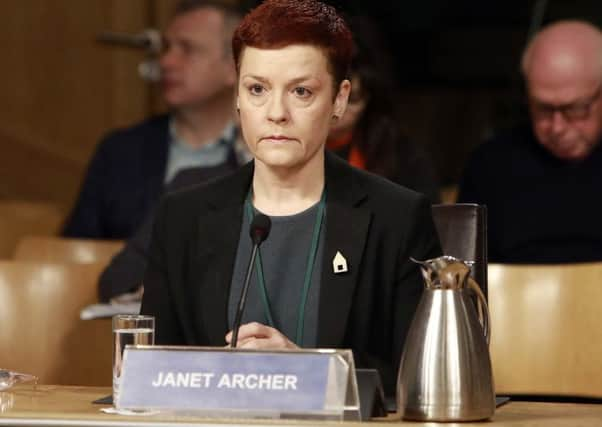Brian Ferguson: When will new culture strategy appear?


Who would have predicted then that the disputes over its decisions would still be raging, with lingering unanswered questions for chief executive Janet Archer, her staff and board?
Ms Archer issued a “profound apology” when she appeared before Holyrood’s culture committee to try to explain why 20 companies had 100 per cent cuts imposed after Creative Scotland received a 22 per cent increase in its Scottish Government grant.
Advertisement
Hide AdShe also accepted full responsibility for the way decisions were made and overturned, and pledged that painful lessons had been learnt.
But MSPs grew increasingly exasperated at the explanations given by Ms Archer and Ben Thomson, the quango’s stand-in chairman during the process.
In particular, over why decisions taken after a “careful and thorough decision-making process” were swiftly over-turned, why the board was unaware of complaints about the accuracy of official reports on companies, and now-discredited claims there had been “unanimous” agreement on the cuts. With MSPs determined to pursue further investigations, the quango’s agony is set to be prolonged.
There is now little disagreement even within Creative Scotland that the last few months have been badly handled.
So why do I feel a nagging sense of sympathy?
Amid all the acrimony, it has largely been forgotten that there was no more money allocated for long-term funding deals.
There is also an inescapable sense that Creative Scotland has been a victim of unfortunate circumstances, particularly over the inevitable upheaval triggered by the sad death last summer of its chair Richard Findlay.
Advertisement
Hide AdFew eyebrows were raised at the announcement of Mr Thomson, a former merchant banker, as interim chair - perhaps due to an eight-year tenure as chair of the National Galleries of Scotland’s trustees.
But he was propelled into a series of increasingly fraught board meetings grappling with the prospect of a 30 per cent cut in its budget.
Advertisement
Hide AdThis was still being discussed in December - two months after Creative Scotland planned to announce its spending plans - due to the UK and Scottish governments delaying their own budget announcements.
But there has been little discussion over whether Creative Scotland was misled into thinking it would have to impose drastic cuts - when the direct opposite was about to happen.
The picture painted by culture secretary Fiona Hyslop in June when she set out ambitions for a new strategy for the creative sector is worth recalling.
In a speech at Glasgow Women’s Library, she declared: “We understand the critical role of public funding and the need for longer term budgets to support planning.”
The above does not sound like a recipe for funding cuts, so why were alarm bells sounding within the quango a few weeks later? And if the government was planning to “maintain” long-term funding for companies why was that not communicated?
Ironically, the latest controversy has almost completely obscured any discussion or debate about that national culture strategyIn the current climate, with huge doubts over the future direction of Creative Scotland, it is anybody’s guess when this cultural strategy will appear.